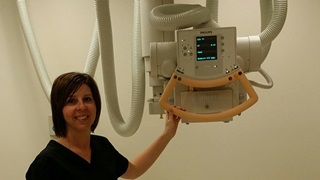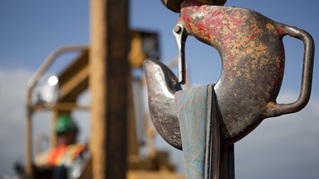On the road with Stan
STARS Mobile Education Unit offers life-saving training in emergency medicine
Stan can breathe. Stan can blink. Stan can speak, Stan can choke and Stan can die.
And in the world of emergency medicine, Stan is most definitely the man.
Stan is Stan D. Ardman, a.k.a. Standard Man—a highly technical human patient simulator used by the Mobile Education Unit of the Shock Trauma Air Rescue Society (STARS).
STARS, based in Western Canada, provides critical care and rapid transport, via helicopter, for critically ill and injured patients. The STARS Mobile Education Unit (MEU), meanwhile, is committed to improving the quality of emergency medical care—among EMS and hospital health-care providers, and among STARS employees themselves.
And the centerpiece of that MEU outreach program is Stan, a quarter-million-dollar, high-tech training mannequin that has a pulse, heartbeat and variable breathing pattern, responds to medications, and is operated by a medical care professional inside the unit’s 42-foot bus during onsite training sessions.
“These medical simulations are amazing to watch in action—real-life situations, and real-time consequences to what the practitioner is doing,” notes Brent Bekiaris, STARS’ mobile education leader in Manitoba. “Stan is so sophisticated that practitioners often forget it’s a simulation . . . I’ve watched seasoned doctors break out into a sweat.”
Over the next three years, Stan—alongside advanced-care paramedics and critical-care nurses with STARS Manitoba’s MEU team—will be visiting 21 Manitoba communities near Enbridge’s pipelines and facilities, and providing invaluable training to health-care professionals, through a $25,000 grant from Enbridge.
“We offer critical care 24/7. Rural hospitals may not experience a motor-vehicle accident or critical illness very often, and may not see a lot of need to perform an intubation (inserting a tube into the windpipe to maintain an open airway),” notes Bekiaris.
“Our MEU team has mentioned that karma works in mysterious ways,” he adds. “We may go provide training for a pediatric intubation, for example, and the following week those providers will be faced with that exact situation—and are thankful they got a chance to simulate it before the real thing happened.
“This Enbridge donation is a huge help to our training efforts.”
The $25,000 donation comes from Enbridge’s Line 3 Replacement Program, which is investing in communities affected by the proposed replacement of our Line 3 from Hardisty, Alberta to Superior, Wisconsin.
We’re committed to enhancing the quality of life in communities near our operations, and our support of this STARS outreach program is one small example.
“STARS provides a vital service to the community, and the Mobile Education Unit is a wonderful extension of their mission-critical medical care,” says Jason Houncaren, acting director of the Line 3 Replacement Program. “We are very proud to support this life-saving educational program. It’s programs like these that align with Enbridge’s objective to advance safety, education and well-being in the communities where we live and operate.”










